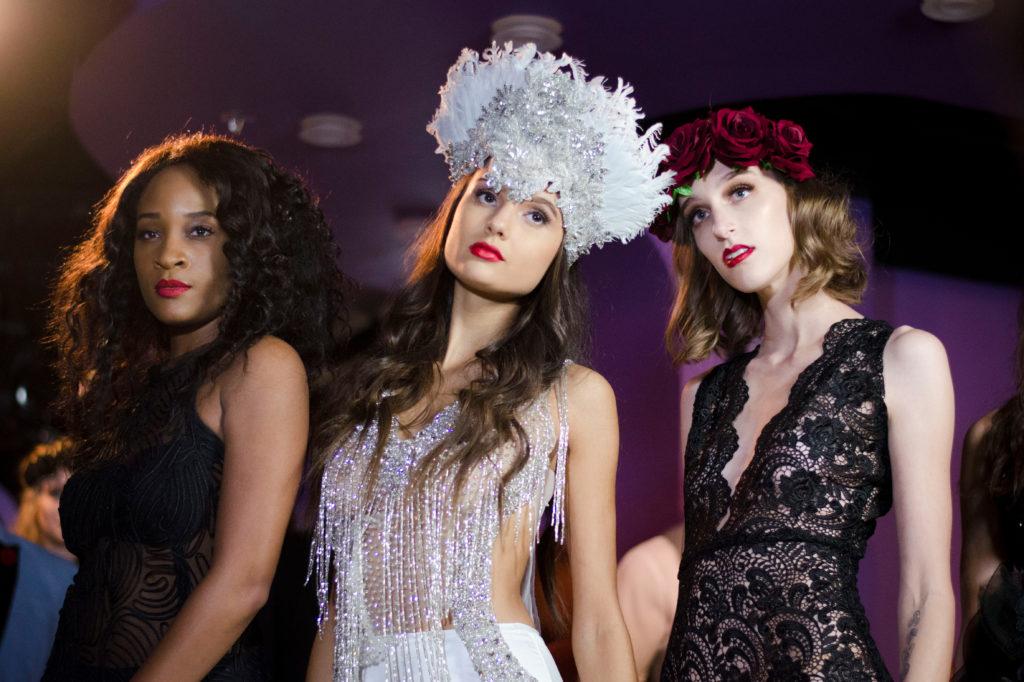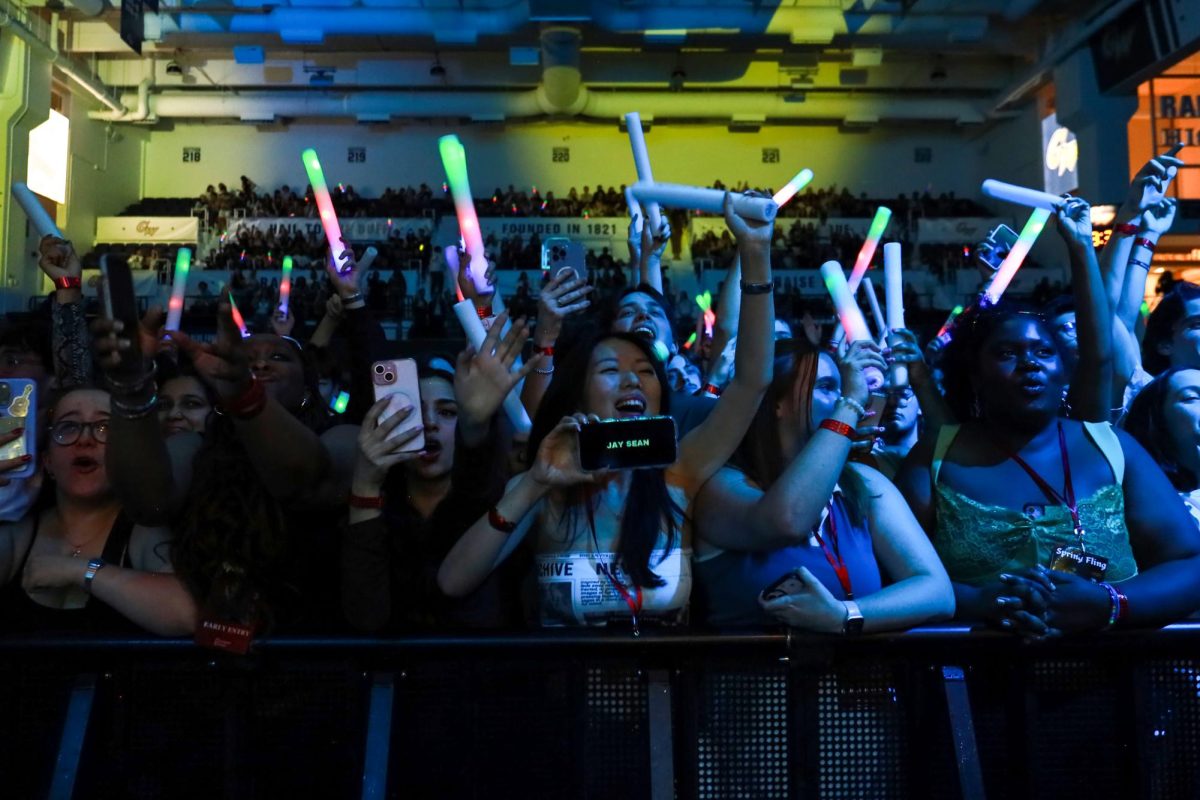When you think of booming industries in D.C., politics, journalism or finance come to mind. But for Ean Williams – a fashion designer and founder of D.C. Fashion Week – the most important business in the District is fashion.
Williams debuted his spring 2019 collection at Madame Tussauds Friday evening, the second night of the weekend-long fashion week. In packed aisles of the wax museum on 1001 F St. NW, Williams sent looks down the runway inspired by a combination of historical D.C. fashionistas and culture from decades ago.
The Hatchet sat down with Williams before the show to discuss the featured looks and his career so far.
The wax museum collection
Madame Tussauds may seem like a unique locale for a fashion show, but Williams said he wanted to enrich his audience and himself with a Hollywood experience.
“I really wanted Met-Gala-comes-to-Madame-Tussauds, so I have some couture designs and some a little more outlandish, because people love celebrating the celebrity culture,” Williams said.
Williams’ show began with the menswear portion, a collaboration with Magnum underwear featuring brightly colored briefs in cotton and neoprene with mesh shirts, and touches of leather and suspenders.
After the menswear portion, the designer presented a tribute to Aretha Franklin. Two dancers, dressed in all-white ensembles from Williams’ design team, performed a contemporary dance to her recording of “A Natural Woman.” They danced around Franklin’s wax figure, which had been specially polished for Friday’s event, Williams said.
[gwh_image id=”1066091″ credit=”Dean Whitelaw | Hatchet Photographer” align=”none” size=”embedded-img”]A model wears a flower crown and dress from Ean Williams’ collection at the second night of D.C. Fashion Week Friday.[/gwh_image]
Following the dance, Williams’ womenswear ranged from ready-to-wear and wedding couture, capturing urban life in D.C. while adopting vintage principles, he said.
“This whole collection started with me looking at an old episode of ‘I Love Lucy’ and just seeing the smoking jackets and flare-out gowns,” he said. “I love fashion in the ‘50s and ‘60s, so that is reminiscent in my collections.”
The show began with a ruffled ‘50s-style gown in black and white with a dramatic headpiece. Sparkles and ruffles dominated the collection, blending elements of the seductive with high fashion.
Most of the evening-wear clung skin-tight to the models, with long, flowing trains trailing behind each step. Every outfit exuded drama and glamour, doing justice to the wax celebrities that surrounded the crowd.
Combining computer science and fashion
Although Williams is now known around D.C. as a fashion aficionado, he said he did not start out in the industry.
Williams attended the University of Maryland to study computer science and previously worked in the intelligence field at the National Security Agency, the International Revenue Service and NASA.
In the workplace, Williams said he was known for his style and he decided to pursue modeling.
“For my whole life, I’ve always been passionate about fashion,” Williams said.
Throughout his career, he picked up modeling and acting roles to further his passion. Eventually, he joined as an instructor at John Casablanca’s modeling school, known for producing supermodels like Cindy Crawford, so he could better understand the inner-workings of the business.
“I worked with many different designers, sometimes they were great, sometimes they were difficult,” he said. “And I thought to myself, if I had my own collection, I wouldn’t have to go through all of this.”
Designing for D.C. Fashion Week
As a self-taught designer, Williams attempted to break into fashion at his first show. However, he said his preliminary showcase gave him a rude awakening.
“After my first show, I was really proud of the end result and one designer turned one of my pieces inside out and said, ‘Would you want anyone to see this?’” Williams said.
The experience forced him to reflect on more technical aspects of his work, like hemlines and stitching, he said.
As his career progressed, Williams eventually tried to score a spot in the New York Fashion Week lineup, but he needed at least $120,000 – which left him to turn to D.C.
When he realized there was no fashion week, fashion council or trade shows to support D.C.’s thriving creative community, he created D.C. Fashion Week in 2004.
Williams now helps emerging designers with business aspects of their brand that may be missing. He said many young designers aren’t aware that you “can’t turn into a Kardashian overnight.”
“Many creative agencies just follow their heart, and that works for a lot of people, but you still need the technical and business training,” Williams said.
Now on its 29th cycle with 14 years of fashion weeks, the showcase will continue to highlight D.C. designers for years to come.





